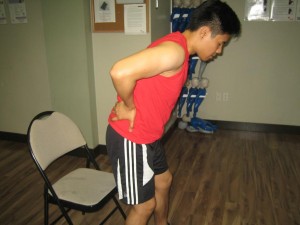A rectus femoris avulsion develops if the rectus femoris muscle strongly contracts to pull the tendon and tugs away a small bony fragment from its attachment point.
Possible causes
It is important to note that the rectus femoris muscle is one of the 4 quadriceps muscles that crosses both the knee and hip joints. Due to this, it is prone to injury.
A rectus femoris avulsion can occur after a strong contraction of the muscle. In the same manner, overstretching of the muscle can result to damage. This usually occurs by bending the knee with the hip in an extended position.
An avulsion fracture of the rectus femoris attachment point typically occurs among teenagers since this region is one of the last to completely solidify into bone.

What are the indications?
- Hip pain, usually at the front region
- Discomfort arises abruptly, usually after an abrupt or strong movement of the hip or knee
- Tenderness can be felt at the site of bone at the front, right above the hip
- Diminished strength during knee extension and hip flexion
Management of a rectus femoris avulsion
Once an individual is suspected with a rectus femoris avulsion, it is vital to seek immediate medical attention. In most cases, an MRI or X-ray of the site is carried out to confirm a diagnosis and pinpoint the exact size of the fracture and degree of displacement.
Most cases are managed conservatively such as rest, application of ice and anti-inflammatory medications.
When the pain has settled, strengthening exercises are essential to restore full hip and knee strength. Injuries where the bony fragment is separated by 3 cm or more from the attachment point requires surgical intervention.
Disclaimer / More Information
The information posted on this page on rectus femoris avulsion is for learning and educational purposes only. To learn how the injury is managed, register for first aid training at one of our training centers located throughout Canada. The training centers are in Edmonton, Calgary, Vancouver, Kelowna, Saskatoon, Victoria, Surrey, Mississauga, Winnipeg, Red Deer, Toronto, Ottawa and Halifax.
